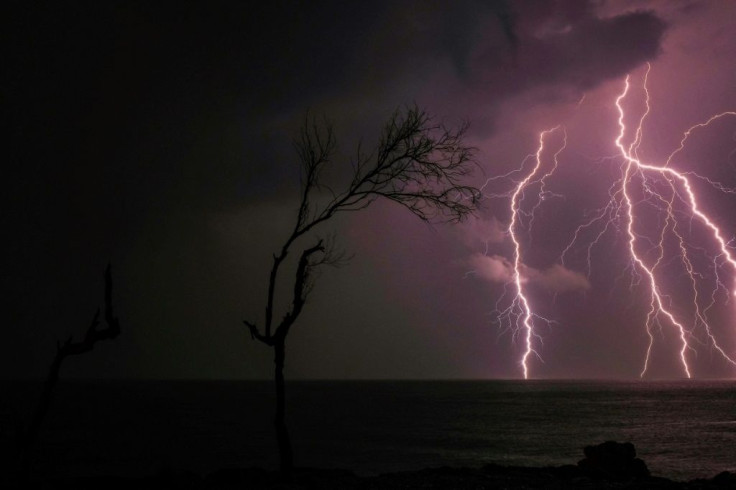Lightning Strikes Car On Florida Highway, Driver Escapes Injury
KEY POINTS
- The man was traveling westbound on I-75 when the lightning hit his vehicle
- The car’s antenna and electrical system were completely damaged
- The driver said he felt dizzy after the lightning strike
A man’s car was hit by lightning on a Florida highway, causing significant damage to the vehicle and leaving a deep gouge on the road. The driver was lucky enough not to suffer any injury in the incident but said that he "saw his life flash before his eyes."
The Florida Highway Patrol said the driver, identified as 48-year-old Ernesto Delhonte, was traveling westbound on I-75 in Broward County at around 11:20 a.m. Monday when the lightning hit his Nissan Rouge, leaving its antenna and electrical system completely damaged.
The strike also left a 7-foot-long, 4-inch-wide hole in the road, the Florida Highway Patrol said in a tweet.
⚡️⚡️⚡️⚡️⚡️LIGHTENING⚡️⚡️⚡️⚡️⚡️struck the antenna portion of this Nissan on I75 in Broward County at mm 30.5! It damaged the electrical system of the car & left a 7 foot long pavement gouge! Thankfully there were no injuries!! pic.twitter.com/QR78PoOQdk
— FHP SWFL (@FHPSWFL) June 14, 2021
Delhonte said he felt dizzy after the incident, Wink News reported. According to him, he was stranded more than one hundred miles away from home when the lightning struck and wasn’t able to start his car.
Talking about the incident, Delhonte said: "I saw my life flash before my eyes. When I heard that really loud sound, I already knew it was hitting me. I didn’t know if I was alive or dead... I feel the sound….el BOOM!"
The car was reportedly towed away from the site and highway crews were alerted about the damage to the pavement.
In such instances, "a typical cloud-to-ground, actually cloud-to-vehicle, a lightning strike will either strike the antenna of the vehicle or along the roofline," the National Weather Service's (NWS) says on its website, adding: "The lightning will then pass through the vehicle's outer metal shell, then through the tires to the ground."
According to the weather service, although "every lightning strike is different, damage to the antenna, electrical system, rear windshield, and tires is common and the heat from a lightning strike is sufficient to partially melt the antenna of a vehicle and can cause what seems like a small explosion of sparks as tiny fragments of metal melt and burn."
In May 2011, 18 children and a teacher were killed when lightning struck a primary school in Kiryandongo, Uganda. A child who had suffered severe burn injuries died later in a hospital. Police said those who lost their lives in the lightning strike took shelter in the school amid heavy rainfall waiting to go home.
Rights groups claimed at the time that the school authorities neglected to install lightning rods in buildings despite lightning strikes being common in the area.























